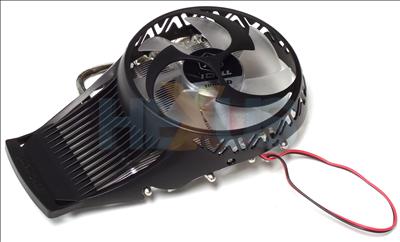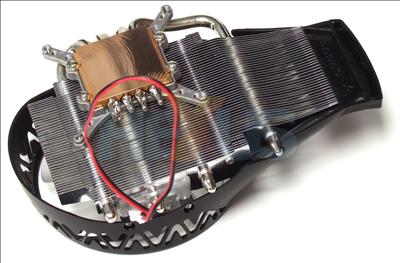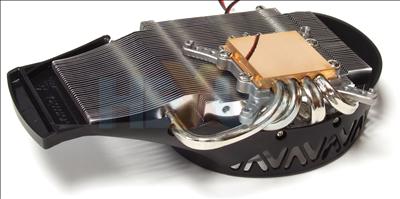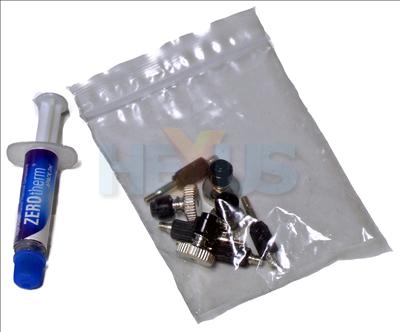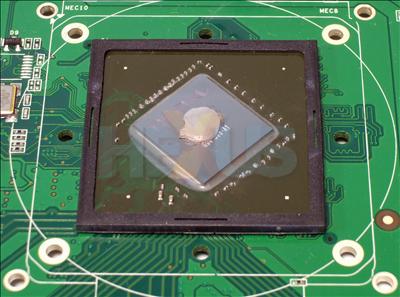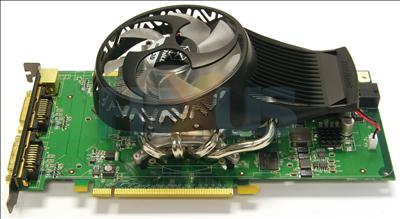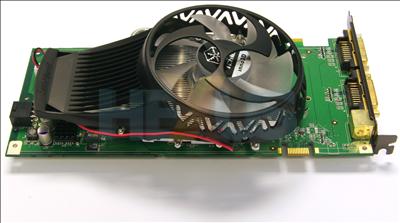Ah, here it is
Here we go. Very much in the vein of Inno3D's partnership with Arctic Cooling for a variety of heatsink/fan units for overclocked and passively-cooled cards, the Hong Kong-based outfit has now turned to ZEROtherm for some aftermarket cooling collaboration.
Specifically, the Hurricane HC92 Cu is cooler of choice, and it's an intriguing one. It's a three-in-one design that can be run either passively (without fan, of course), what's termed an 'aero-dynamic' mode, where the fan speed is modulated according to temperature, and, finally, overclock, where it runs at full speed.
The 92mm fan, when used, operates at between 1,500 to 3,300RPM, yet we found the fan, once mounted, to be very quiet even when under load. The cooler wire plugs into the PCB and the fan's speed is controlled by the card's BIOS and/or any other utilities you may have.
The aftermarket specifications suggest that it ships with both a fan-controller and eight aluminium heatsinks for the memory modules. Our package was bereft of both, unfortunately. No big deal on the controller, given how the card controls speed, but we'd like to have seen the memorysinks included.
The 372g cooler uses a copper base allied to four heatpipes that combine to spread the absorbed heat to the aluminium fins. The fan, which can push around 58cfm in full-speed mode, wafts the heat away from the cooler.
One downside of using such a big cooler comes at the inevitable cost of space. The ZEROtherm Hurricane HC92 Cu takes up two PCI slots on its own. Add the card and you need to make provision for the blocking-off of three.
We're not fans of the bundled instructions, however. They state that the cooler can be run in passive mode if the card has a TDP of under 50W. We can tell you that the GeForce 9600 GT is near 100W, so running passively will lead to overheating rather quickly. Why not just state that it's recommended, in passive mode, for the X, Y and Z SKUs?
Further, the instructions detail that the cooler be attached to holes no. three (applicable to GeForce 8800, we understand), where, in fact, it should be holes no. two.
So here's how it's done. You're provided with some thermal paste and the appropriate mounting screws.
Dab some on the core, spread it out so that it becomes a thin film, and attach the cooler. The GPU-surrounding shim should stop any of the 505M transistors from meeting with a premature end. The entire process should take around 10 minutes.
We're not entirely sure why the cooler isn't pre-attached to the card, because that would make implicit sense. The packaging wouldn't have to be any larger, too. Perhaps it's just a case of buying in the aftermarket cooler, grabbing a bunch of PCBs, and bundling them together?
Here you can see the triple-slot-taking nature of the card.
There's no way of making it 'thinner' without removing the fan - something you don't want to do on a GeForce 9600 GT.






